Up Next
Beijing-Based Painter Zhang Zipiao Abstracts the Bounty of Life—Flesh, Flowers, Fruit—in Her Opulent Still Lifes
The artist's solo exhibition "Swallow Whole" is currently on view at LGDR in New York.
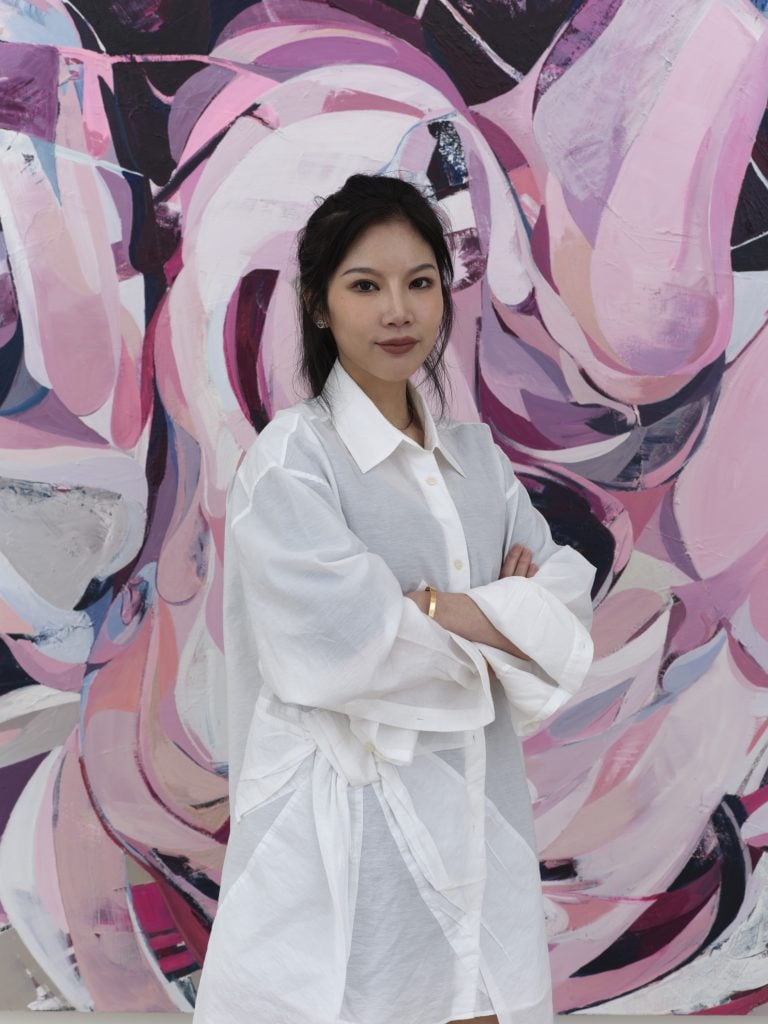
The artist's solo exhibition "Swallow Whole" is currently on view at LGDR in New York.

Katie White

When Zhang Zipiao (b. 1993) was a little girl growing up in China, her mother—a doctor—would often come home after work, turn on the computer and begin reviewing PowerPoint slides and videos of gastrointestinal surgeries she was studying or preparing to perform. Zhang would peer over her mother’s shoulder, mesmerized, watching as an endoscopic camera made its way down a patient’s throat and toward the innards of the stomach and intestines. “My mom always needed to do overtime at home,” Zhang explained in a conversation at LGDR’s 89th Street space, where her debut solo exhibition with the gallery “Swallow Whole” is currently on view (through July 28). “I wasn’t exactly sure what I was seeing,” she said. “From that perspective, the body becomes very abstract.”
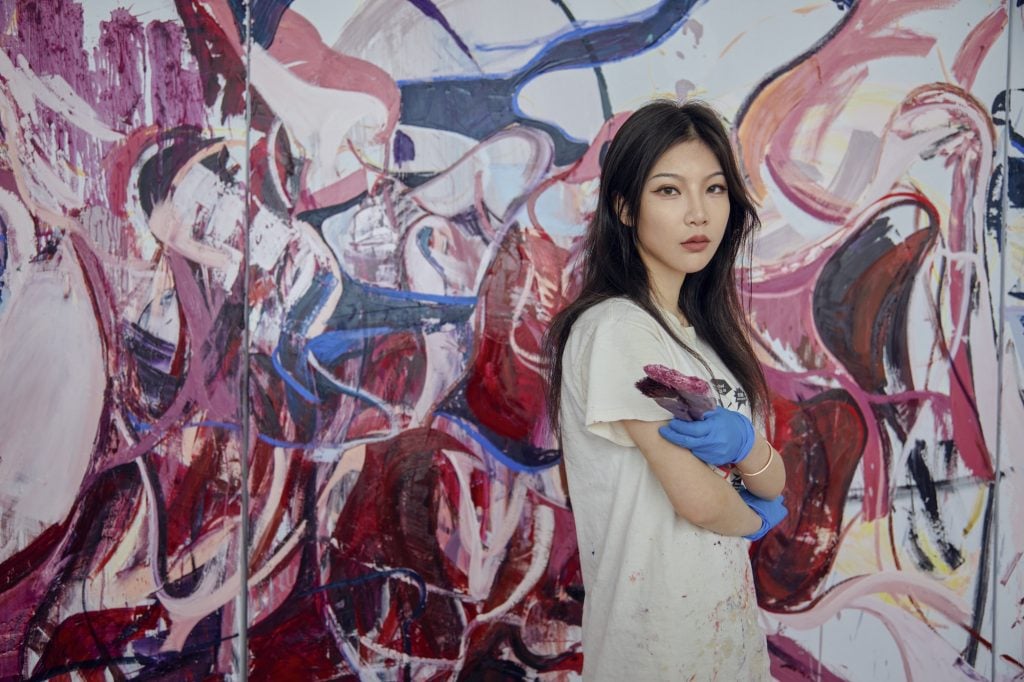
Zhang Zipiao in her Beijing studio in 2022. Photo: Yu Fan.
Flesh, in all its decadent and disturbing forms, is the artist’s primary fascination, as “Swallow Whole” underscores, but here rendered obliquely, in looping, rhythmic passages of oil paint. At first blush, these recent paintings, which range from intimate small canvases to enveloping triptychs, can appear superficially pretty—ribbony abstractions in reds, purples, and luscious shades of pink. Sit with them awhile, however, and fleshy forms emerge—bloodied organs, plump oysters, calla lilies, clenched rosebuds, and elegant, watchful spiders.
“I’ve always wanted to capture the texture of a petal,” she told me, rubbing her fingers together as though holding a petal between her fingers. “It’s similar to human skin in its thickness, the moisture and the veins too, like an eyelid.” In previous bodies of works, Zhang rendered her imagery more representational, though with equally baroque intensity, favoring riotously blossoming flowers, ripe pomegranates split open, round, white eggs. For Zhang, the imagery has come to her intuitively. “Meaning is important, but it’s not the most important. What’s most important to me is the color, the composition, the quality, and handling of the painting,” she said, when asked about her choice of imagery. Though reticent to delve into symbolism, the artist chooses to be led by her subconscious and a sense of fate, rather than any intellectual considerations. That’s how she got into art in the first place.
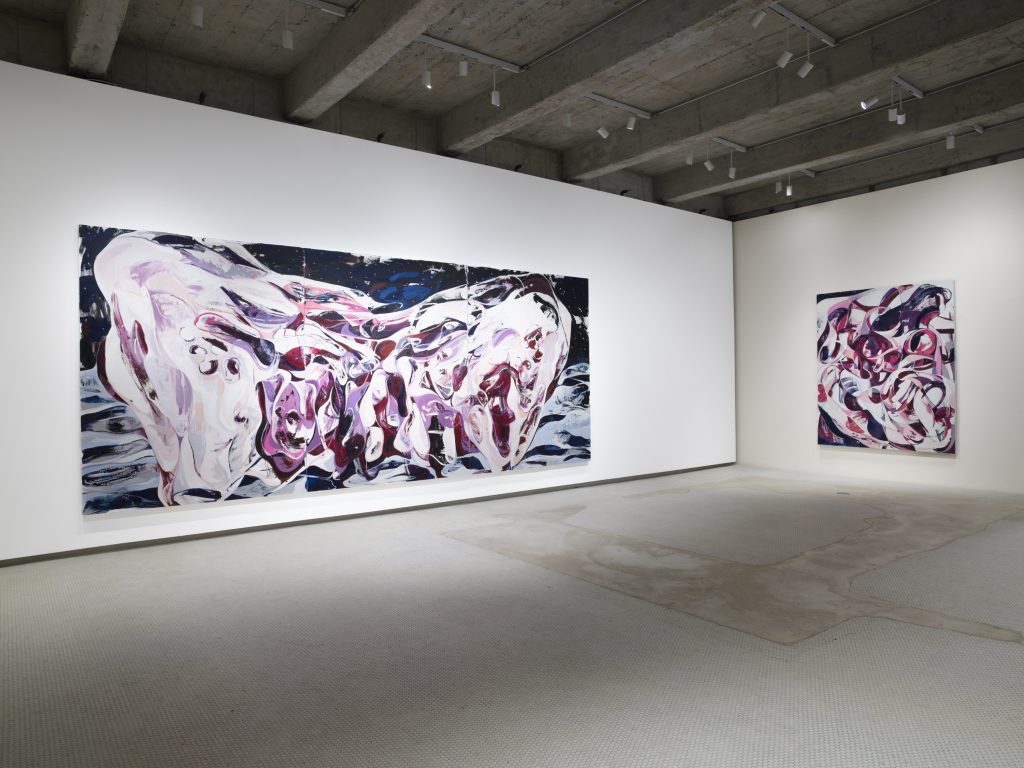
Installation view “Zhang Zipiao: Swallow Whole”, 2023. Photo: Elisabeth Bernstein. Courtesy of LGDR.
Now based in Beijing, Zhang studied at the School of the Art Institute of Chicago. Her father, a professor at the China Academy of Art with his own practice in animation, encouraged Zhang in all her creative pursuits (though she grew up living with her mother), but she didn’t actively consider becoming an artist. Wanting to attend college in the States, she thought that pursuing art might be a way of skirting a language barrier. “At that point, my English was pretty bad and I didn’t think I could pass exams for reading and writing,” she explained with a smile. “Four years later I graduated with no job skills so then I had no choice besides painting. It all happened very innocently, happily, and randomly. I’m never a very conscious person when it comes to decisions in my life, I’m led by my subconscious, and so I’m very lucky to be painting.”
Similarly, Zhang’s move toward the abstraction of her forms was prompted by her own feelings of confusion and disillusionment as a result of lockdown. In Beijing, she was able to go to her studio and paint, a milder experience than had by many, and regards her experience as “lucky.” Nevertheless, she became increasingly aware of the invisible forces, including illness, culture, and surveillance, that can so powerfully shape our lives.
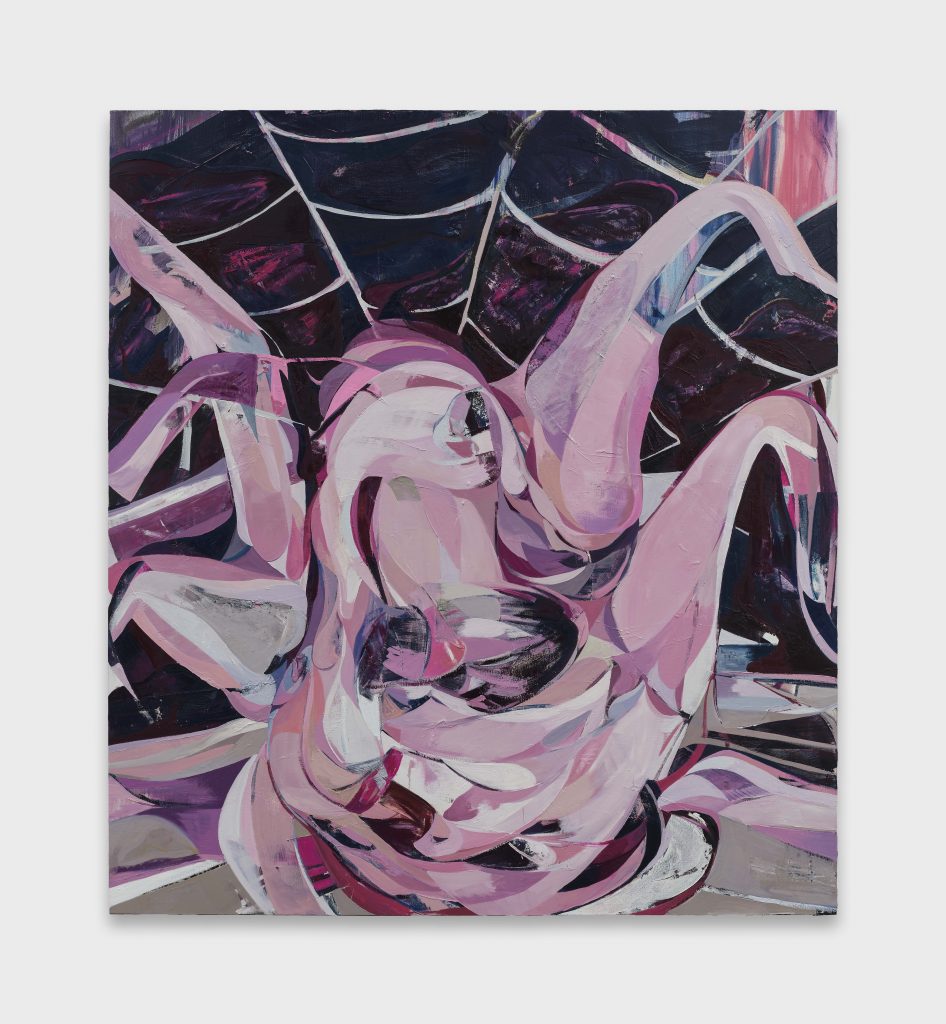
Zhang Zipiao, Spider 02 (2023). Courtesy of the artist and LGDR.
“When I was growing up in China we didn’t really have supermarkets, we had the wet market and the butcher,” she said, explaining her own childhood experiences entwining death, flesh, and consumption. “My mom would take me to the butcher shop and I’d watch as they put the chicken in boiling water to loosen the feathers, and then kill it. I was so fascinated by the rawness of it.” While studying in the U.S., Zhang would spend hours in Whole Foods, photographing plastic-sealed meat. “I just think it’s beautiful,” she added.
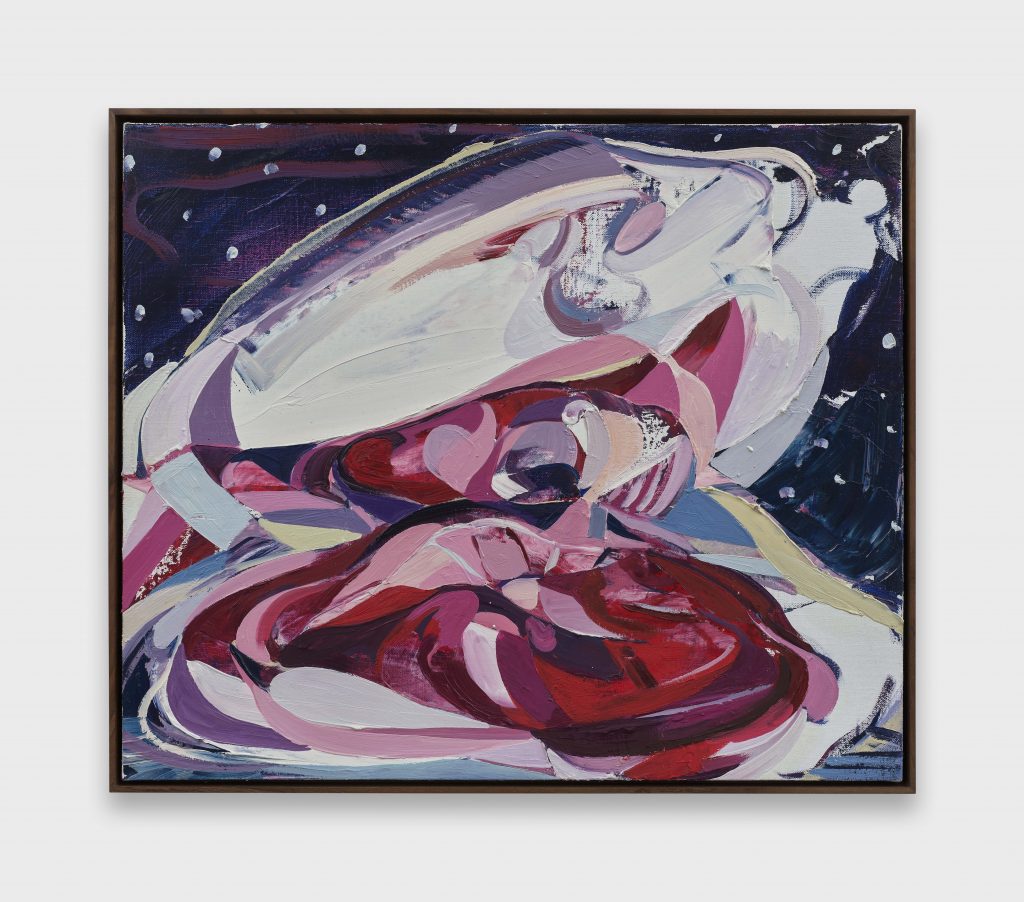
Zhang Zipiao, Mother of Pearl (2023). Courtesy of the artist and LGDR.
In this sense, Zhang falls into a long art historical tradition of vanitas paintings, images often of opulent displays of food which serve as symbols of moral depravity and reminders of the ephemerality of the soul. Francis Bacon, too, comes to mind as a reference; his Figure with Meat (1954) particularly, but broadly in his malleable, and often grotesque treatment of the body. Chaim Soutine’s carved open slabs of animal meat, convulsive expressions of psychic suffering, and physical torment of the World Wars, also seem an apt comparison, as does Rembrandt’s psychologically rich understanding of the flesh.
Zhang conceives of reds, pinks, and purples, as a kind of grayscale in her oeuvre, a register of the basic colors of flesh, which she tones up or down, and in this sense, she aligns herself with Philip Guston. Chinese culture’s intense associations with the color—as a harbinger of luck and health—are in consideration. “Red is a color that can be both very good and very bad. It can be a warning, red can tell you to stop. It symbolizes passion, vitality, but also blood,” she said. “It’s an extreme color and I wouldn’t say I personally like it.”
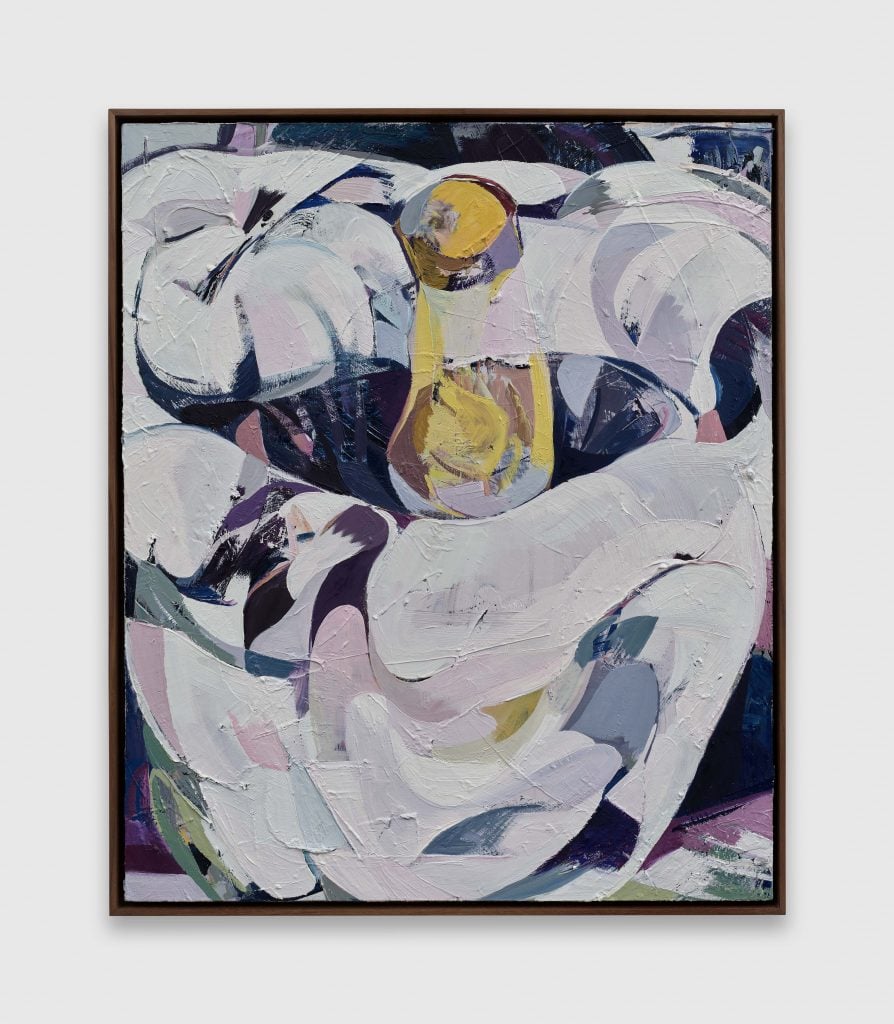
Zhang Zipiao, Calla Lily 10 (2023). Courtesy of the artist and LGDR.
Pink, of course, has strong associations with gender and femininity in our current moment, and the longer one sits with Zhang’s works, hints of a certain grappling with notions of femininity and sexuality arise. On one register, Zhang’s gestural handling of paint harkens to Lee Krasner’s abstractions. Meanwhile, her paintings of calla lilies and spiders, of course, bring to mind Georgia O’Keeffe and Louise Bourgeois, and their incumbent Freudian analyses.
Zhang attributes her fascination with spiders and oysters to late nights in social media rabbit holes, rather than art history. “In the middle of the night, one of these videos pops up, showing someone squeezing pearls out of the flesh of clamshells,” she said, “It’s almost like Dr. Pimple Popper, the way the pearls come out. It’s all so squishy. I couldn’t stop looking at these videos and I thought ‘I’m going to paint this,” she said, referencing the genesis of her “Mother of Pearl” series. Similarly, she said, interest in spiders sprung from discovering “very weird insect videos.”
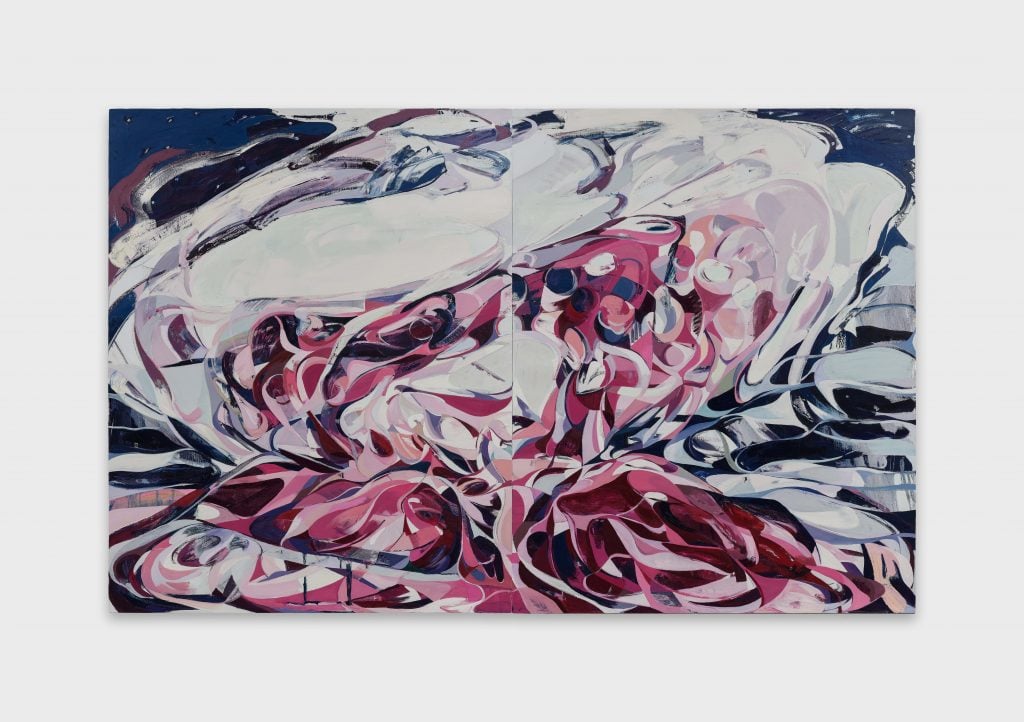
Zhang Zipiao, Mother of Pearl 08 (2023). Courtesy of the artist and LGDR.
In these ways, Zhang taps into a sense of isolation, escapism, and voyeuristic pleasure and perversity that permeate our daily lives. Order barely hangs on; we are inundated with her tangles of ribbony paints, which pile high, poised to tip over and scatter. The opulence of it all may be our undoing. In her four-meter-wide diptych Mother of Pearl 08 (2023), which stretches four meters wide, a colossal oyster is presented cracked open, swirls of rippling lines surrounding it like crashing waves of color. Sandro Botticelli’s Birth of Venus (ca. 1485) comes to mind, the goddess of love offered up like a pearl. But, here, Venus is nowhere to be found. One thinks then of the title of the exhibition, “Swallow Whole.” We’re left with what exactly is being devoured; Zhang seems to say it’s us.